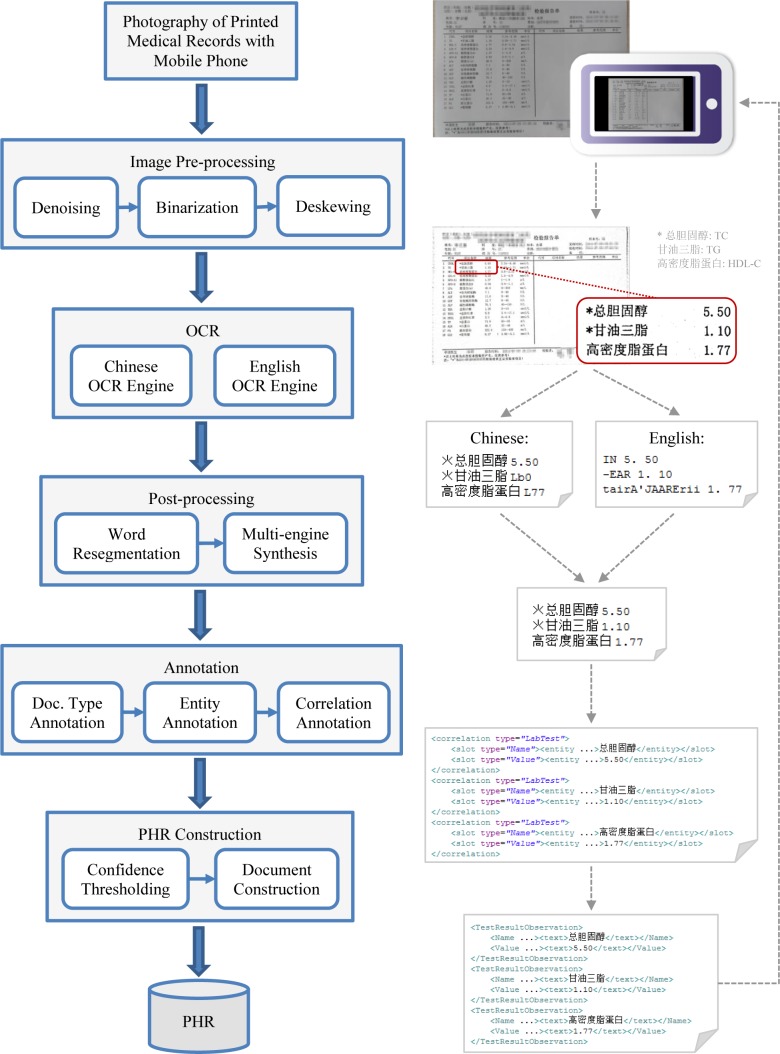Building AI-OCR for Digitizing Healthcare Records and Lab Reports
Sanam Malhotra | 17th June 2020

The currently crippled state of global healthcare infrastructures certainly requires a technology-led boost to improve treatment. Backed by algorithmic advancements, artificial intelligence (AI) is emerging as a key driver for healthcare digitization and automation. AI coupled with traditional document digitization systems, i.e. Optical Character Recognition (OCR) is achieving greater success for data capture and extraction. AI-OCR for digitizing healthcare records is a power duo that can handle complex medical records and lab reports efficiently and accurately.
As an experiential AI Development Company that provides AI-powered OCR solutions, Oodles AI sizes the potential of AI-OCR in the healthcare industry.
Significance of AI-OCR for Digitizing Healthcare Records
With massive data processing capabilities, AI-powered OCR is emerging as a sweet spot for enterprises looking for process automation applications. For healthcare data management, machine learning offers ideal techniques to scan, process, store, edit, and archive physical copies of medical records. AI-infused OCR scanning services automate and accelerate the adoption of “Electronic Health Records” for healthcare companies, thereby enhancing business intelligence.
In addition to automated data capture, below are some other business benefits of integrating AI-OCR for digitizing healthcare records-
1) Intelligent Data Extraction
While traditional OCR systems were inefficient at handling unstructured documents, intensively trained AI models can easily identify and capture text from complex docs. Healthcare data indexing and processing with AI-OCR solutions become highly efficient for-
a) Semi-structured and unstructured documents
b) Screen scrapping for desktop, web, and documents
c) Text analysis
d) Entity Extractions, and
e) Data capture from unstructured emails

2) Seamless Accessibility and Storage
Institutions often face challenges in sifting through voluminous healthcare records and extracting relevant information from physical documents. With AI-OCR, healthcare professionals can not only digitize but also maintain editable and searchable copies of healthcare records.
We, at Oodles, use third-party OCR frameworks, such as Tesseract OCR for storing complex medical records automatically to cloud-based storage.
For medical records, Tesseract OCR is an ideal solution that extracts texts from both images and documents and returns output in JSON format. Moreso, the Google-run OCR engine can detect handwritten texts from prescription records and lab reports using the Vision API.
3) Multiple Formats and Language Support
In contrast to rule-based OCR systems, AI-led OCR solutions exhibit higher accuracy in capturing data from multiple formats including TXT, XLSX, HTML, DOCX, JPEG, TIFF, PNG, and PDF. Also, the multilingual functionality of AI-powered OCR engines supports English, Spanish, French, and other languages.
Also read- Improving Data Analysis with AI-powered OCR Applications
The architecture of AI-OCR for Digitizing Healthcare Records
Step 1: Image Pre-processing
The first pre-requisite for AI-OCR is the scanned copy of medical records using an optical scanner. It is followed by preprocessing, wherein the goal is to make raw data workable for computer systems. The process involves sanitizing lower quality images via “image binarization” to convert an image into black-and-white versions. Under machine learning, adaptive thresholding algorithms denoise and deskew images to remove dark lines, marks, or any other anomalies.

In addition to image denoise and deskew, AI algorithms apply various other techniques to rectify the image inconsistencies, such as-
a) Character enhancing
b) Histogram equalization
c) Page segmentation
d) Page layout analysis, and
e) Line-word-character segmentation
Another reason why AI-OCR for digitizing healthcare records works best is that algorithms can automatically generate blocks around text characters. It leads to improved accuracy and efficiency for data extraction.
Step 2: AI-OCR
Once the medical records have been processed, the output is pushed for pattern recognition via deep neural networks (DNNs). The main objective here is to split the input data into a set of features so that it is easier for the OCR model to classify characters. That includes alphabets, words, digits, punctuation, and strokes. Within DNNs, Convolutional Neural Networks tend to minimize the error rate by using multiple hidden layers for accurate character classification.

A research paper published in NCBI visualizes the steps involved in machine learning-based OCR for extracting PHR or Personal Health Record.
Step 3: Post-processing
The final stage involves synthesizing and refining the OCR output to avoid errors and inconsistencies. The final layer of neural networks, i.e. LSTM (Long-short term memory) takes care of the context by predicting the next possible word in a sentence. It ensures over 99% accuracy in deploying AI-OCR for digitizing healthcare records.

At Oodles, our most recent achievement under AI-OCR implementation constitutes data extraction from ID cards, particularly Aadhaar cards. We trained neural networks with rich data to capture and store essential information from unstructured ID cards. The solution is aimed at automating digital onboarding, eKYC, insurance agreements, and other labor-intensive processes.
Also read- How-to Guide: Deploying Tesseract OCR With Python and OpenCV
Oodles AI-OCR for Digitizing Healthcare Records
In the wake of paralyzed healthcare infrastructures grappling with the COVID pandemic, AI technologies are emerging as a panacea for healthcare challenges. Backed by algorithmic advancements, AI and machine learning techniques are offering robust solutions for improving healthcare processes, facilities, and services.
We, at Oodles, are constantly making efforts to harness AI technologies to combat healthcare challenges with minimum cost and maximum value.
Our capabilities under AI-powered OCR encompass-
a) Using Google Cloud Vision APIs for automated data capture
b) Employing Tesseract OCR for complex data structures and multilingual support
c) Deploying OpenCV to enhance character classification, and
d) Importing patient data in other applications to improve diagnosis
Join forces with our AI development team to know more about our AI and machine learning capabilities and solutions.



